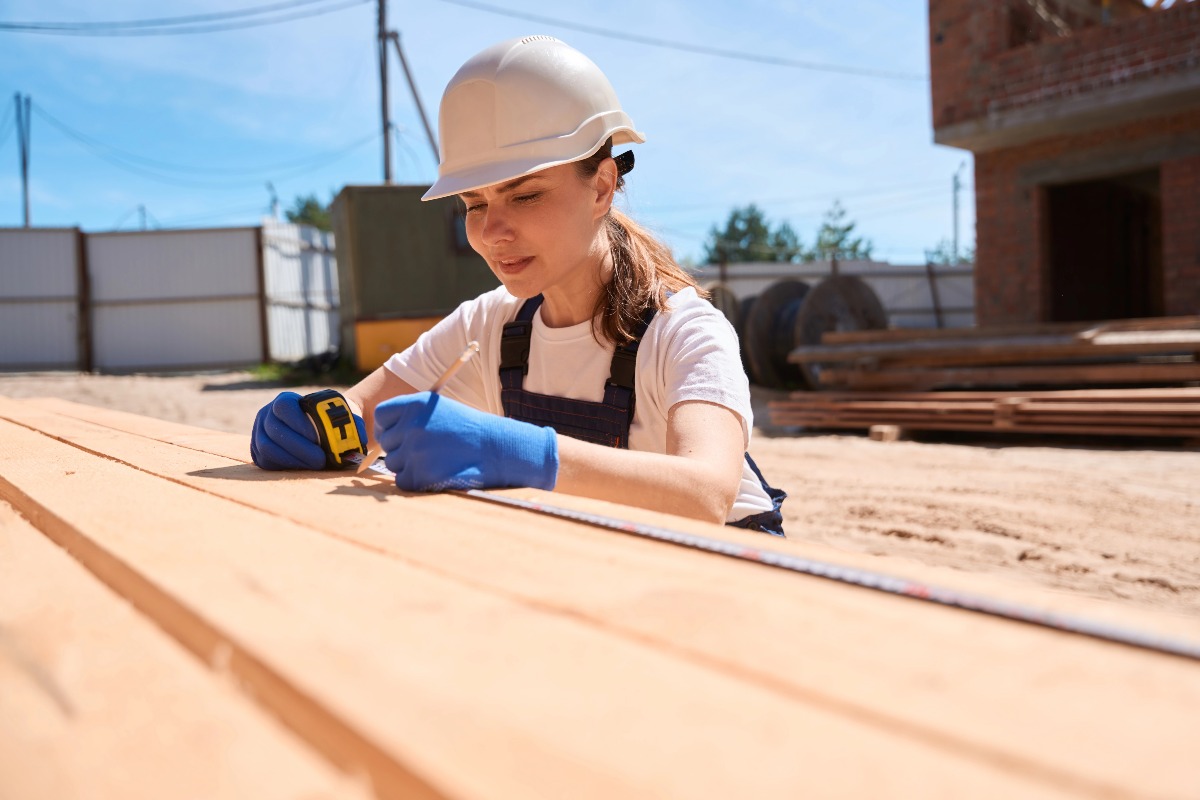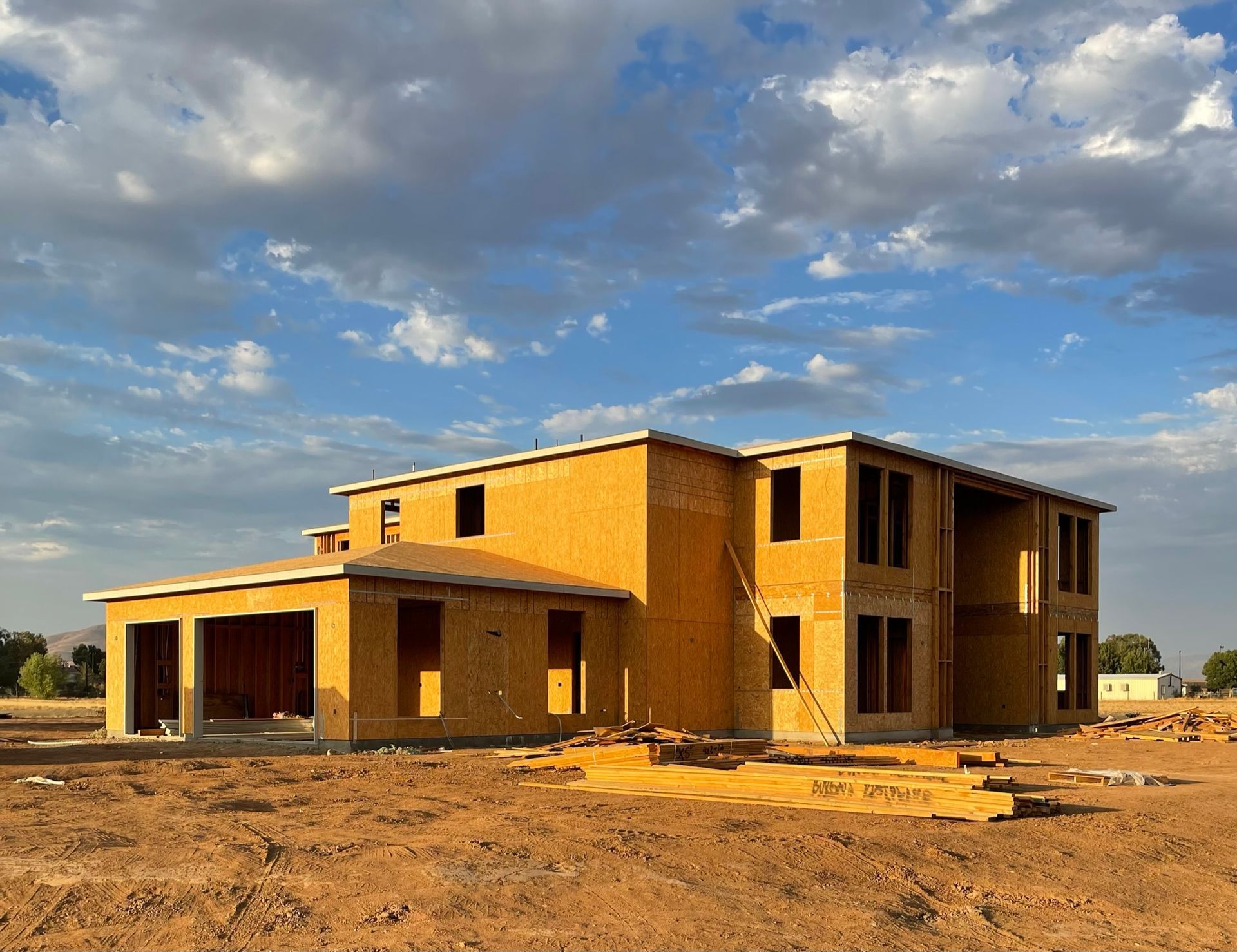Avoid These Common First-Time Home Building Mistakes: 2025 Guide for a Smooth Build
Avoid Common Mistakes
Common Mistakes First-Time Home Builders Should Avoid [2025 Guide] Building your first home feels exciting, but it can quickly turn stressful if you slip up on the basics. Missed details or rushed decisions often lead to headaches later, plus added costs you didn’t expect. Avoiding common mistakes right from the start saves you time, money, and frustration.
This post breaks down the frequent missteps first-time home builders run into, so you can move forward with confidence. With a bit of planning and the right knowledge, you can sidestep these issues and make your new home project a smoother experience.
Failing to Plan Thoroughly in the Pre-Construction Phase
Starting a home build without a clear plan can cause regret and stress before the walls go up. Skipping key details early makes small problems grow once the work starts. Many first-time home builders run into trouble simply because they miss important steps in the pre-construction phase. Here’s where a little more time, research, and honest planning pay off big.
Overlooking Location and Lot Considerations

Owner review the plans with contractor
Many people fall in love with a home design but forget that not every lot works for every plan. The location you pick will shape your daily life—the commute, local schools, neighborhood mood, and even resale value.
When picking a lot, think about:
- Soil quality and drainage. Poor soil ups building costs and creates future repairs.
- Sun exposure. The direction your home faces changes heating costs and natural light.
- Community guidelines. Some areas have strict design restrictions or expensive HOA fees.
- Site access. Steep driveways or tricky access are a pain for everyone long-term.
It’s easy to ignore these details and let excitement drive your decision, but a little patience here saves big headaches later.
Not Accounting for Future Needs and Lifestyle Changes
Most people dream of their perfect home and forget how life changes. Kids, pets, aging parents, or even working from home all change what you need from your space.
Make a quick list of needs for today, and ask:
- Will this space fit a growing family or new hobbies?
- Does the floor plan support working from home or aging in place?
- Are there flexible rooms that can change use over time?
Skipping this step leaves you with a house that works today, but soon feels too cramped or impractical.
Skipping the Detailed Budget and Contingency Planning
A budget isn’t just a rough guess on a napkin. It’s a roadmap for the build, and skipping details here is a main source of regret for first-timers.
Strong pre-construction budgeting means:
- Listing materials and finishes in detail. Prices change. Allow wiggle room for upgrades or shortages.
- Factoring in permits, utility hookups, and site prep. These extras add up fast.
- Building a safety net. A good rule is to add 10-15% extra for surprises or price jumps.
When you break ground without a clear, honest budget and backup plan, even small issues can set off a chain reaction of delays and unexpected bills.
Smart research, open conversations with your builder, and locking in choices ahead of time all lay the groundwork for a smooth build. Time spent planning is never wasted.
Choosing the Wrong Builders and Contractors
The right builder can make your home project run like a well-oiled machine, but the wrong one can leave you with regret, stress, and costly repairs. Trust and skill matter from day one. Many first-time home builders trust fast talk or low prices without enough backup. This is a gamble that rarely pays off. When hiring a contractor for your first home, take these common mistakes seriously, as they can set the tone for your entire build.
Insufficient Research on Builder Reputation and Experience
 A Project manager at job site
A Project manager at job site
A builder who looks perfect on paper might not deliver as promised. Many new home builders pick the first name that pops up online or jump at a friend’s recommendation, skipping real research.
Problems show up fast when the crew doesn’t have the right experience for your house style or when past clients have horror stories to share. You don’t want to discover halfway through the job that your builder can’t manage timelines or fix things when mistakes happen.
Smart tips for vetting:
- Check that your builder’s experience matches your home style. Someone who does commercial builds or big developments might not be ideal for your one-off dream house.
- Look for consistent positive reviews. Search on public review sites, not just testimonials on the builder’s website.
- Ask for references and recent projects. If previous customers are happy to recommend them, you’re on the right path.
Spotty reviews and vague answers should set off alarm bells. This is your home—don’t settle for shortcuts.
Not Verifying Licenses, Insurance, and Past Projects
A handshake and a business card do not protect your home build. If you skip the legal details, you risk problems that cost you money and sleep. Some builders cut corners and work without proper permits, licenses, or insurance. If an accident happens or the work doesn’t meet code, you could be left holding the bag.
Before signing anything:
- Check that the builder has current licenses in your area.
- Confirm insurance—for both liability and worker injuries.
- Ask to see permits for past projects. Good contractors will gladly share this.
- Visit a few finished works. Seeing their completed builds in person shows quality in real life.
These steps take extra time, but they protect your investment and peace of mind.
Failing to Get Everything in Writing with Clear Contracts
Verbal promises fade fast, especially when deadlines, costs, and designs change. Suffering through a home build without a clear contract is like driving at night with no headlights. If anything goes wrong, you have nothing solid to fall back on.
A good contract spells out:
- Project scope and timeline
- Breakdown of materials and labor
- Milestone payment schedule
- Processes for handling changes or delays
- Clear warranties and contact terms
Insist everything is in writing before work begins. Review the contract carefully—no detail is too small. Anyone who hesitates is not the right fit for your first home.
Hiring the right builder and contractor isn’t just paperwork, it’s peace of mind for the biggest purchase most people ever make. Taking extra time here can save you from months of stress and extra costs down the road.
Design and Customization Errors
Designing your first home brings all kinds of excitement, but it’s easy to get side-tracked and overlook features that really matter day-to-day. Rushing through design choices can leave you with a house that feels awkward or wastes money in the long run. Here’s where many first-time builders make mistakes that can lead to frustrations or expensive changes down the road.
Ignoring Functionality for Aesthetics

Architect reviewing plan accurately
Many people fall in love with design trends or flashy finishes, but ignore how a space actually works. A striking open shelf looks good in a magazine but can be a dust magnet and gives you less storage. Choosing beautiful but impractical flooring, like high-gloss tiles in a busy hallway, leads to slip hazards or nonstop cleaning.
Common missteps to watch out for:
- Overly open floor plans that feel spacious but offer no privacy or quiet space.
- Picking stylish lighting without checking brightness or if it fits your habits.
- Forgetting about furniture placement and flow between rooms.
- Adding features that are admired online, but aren’t needed for your routine.
Focus on how rooms will function with the way you actually live. If you’ve ever cursed a tiny closet or an awkward kitchen, you know looks aren’t everything.
Not Planning for Energy Efficiency and Sustainability
Making choices just on looks or upfront price can saddle you with higher bills and a less comfortable home. Many first-timers skip energy efficiency upgrades thinking they’re too expensive or hard to plan. In reality, smart upfront picks pay off for years.
Key mistakes include:
- Skimping on window quality or placement, leading to hot summers and chilly winters.
- Skipping insulation and sealing, which leaves you relying on the HVAC all year.
- Forgetting about solar orientation, so you miss out on free natural light and warmth.
- Passing on eco-friendly appliances and systems that save money over time.
Think of sustainability like insurance for lower bills, less maintenance, and better comfort. Small steps, like LED lights, extra insulation, or a smart thermostat, add up to a better home.
Neglecting Storage and Practical Spaces
Storage rarely feels urgent during design, but it quickly becomes the number one complaint once you move in. There’s nothing worse than stacks of boxes or coats thrown on chairs because there’s no dedicated space for them.
Avoid these common blunders:
- Too few closets or poorly located ones.
- Tiny kitchen pantries or no mudroom for shoes and coats.
- Forgetting garage or attic space for off-season storage.
- Not adding built-in shelving where you need it most.
It helps to make a quick inventory of your belongings and daily routines. Do you have sports gear, holiday decorations, or outdoor tools? Building in enough storage saves you from daily clutter and the cost of add-ons later.
By thinking beyond looks and planning for how your home will actually work, you’ll bypass mistakes that so many first-time builders regret.
Project Management and Communication Pitfalls
Building a new home comes with plenty of decisions and steps, but even with the best blueprints, simple mistakes during construction can cause frustrations and extra costs. Most of these issues come down to project management and communication. When first-time builders lose track of what’s happening on site or miss important updates, small problems can snowball into big setbacks. Staying on top of these details keeps your house on schedule and your stress lower.
Lack of Regular Site Visits and Updates
Many first-time home builders assume the professionals will handle every detail, so they only check in once or twice during the construction process. This is a mistake. Skipping site visits or not asking for regular progress reports leaves you blind to changes or potential issues.
- Missed errors: Small mistakes in framing, plumbing, or finishes might get hidden behind drywall or paint.
- Costly late changes: Not noticing problems early can make fixes more expensive down the line.
- Lack of accountability: Builders work best when they know the homeowner is involved and paying attention.
Treat site visits as important appointments without skipping. Even if you can’t get to the property every week, ask your builder for photos, video updates, or written summaries. Document changes you spot and keep notes so nothing is forgotten.
Poor Communication with Builders and Suppliers

An owner with subcontractors
Open and clear communication keeps your build on track. Unfortunately, many new home builders don’t ask enough questions or end up relying on guesswork and assumptions. Missing emails or unreturned calls can cause:
- Mismatched expectations: Details about materials or finishes can get lost, leading to surprises on move-in day.
- Delayed orders: If you forget to approve a fixture or tile sample, suppliers might hold off on deliveries, stalling the whole project.
- Arguments over details: Without written records of what’s decided, it’s too easy for plans to slip, causing arguments or costly changes.
The best approach is to set a routine way to check in. Use email or shared project tools to log every choice and update. Don’t hesitate to repeat something until you get a clear answer or timeline.
Underestimating Timeline Delays and Hidden Costs
Almost every build hits delays or discovers extra expenses, but many first-time builders hope for the best and plan as if every task will line up perfectly. Ignoring the risk of delays or unseen costs can drain your wallet and your patience.
Common reasons for schedule and budget surprises:
- Weather conditions slow down exterior work like roofing or painting.
- Vendor backorders make it hard to get special cabinets or custom windows.
- Inspections turn up work that needs redone, adding days and extra labor.
It helps to:
- Pad your move-in target by at least a few weeks.
- Set aside an extra 10–15% of your budget just for unexpected costs.
- Check schedules against actual progress, not just promises—if one task slips, ask how it affects the rest.
A realistic mindset and honest communication help avoid disappointment down the line. Everyone wants to finish on time and on budget, but hoping isn’t a strategy. Plan for the unexpected so you’re ready for it.
Legal and Regulatory Oversights
When building your first home, it’s easy to stay focused on the fun stuff, like picking floor plans and finishes. But letting legal and regulatory details slide can knock your whole project off track in ways you don’t expect. Skipping required paperwork or glossing over insurance leaves you exposed to big risks, steep fines, or delays that stop your build in its tracks. Protect yourself by understanding what must be done—no shortcuts.
Neglecting Permits and Building Codes
Cutting corners on permits or ignoring local building codes creates problems faster than most first-timers realize. Without the right permits, your project might get shut down in the middle of framing, and work done out of code could need expensive fixes. Fines and delays are bad enough, but skipping these steps can also hurt the resale value and safety of your home.
Getting permits is much more than a paperwork shuffle. Local government offices need to review your plans and check that everything meets safety standards, energy efficiency requirements, and zoning laws. Skipping this step can lead to:
- Unexpected stop-work orders from inspectors
- Fines or forced changes during or after construction
- Issues when selling or refinancing your home down the road
- Safety risks if work doesn’t meet legal standards
Tips for avoiding this mistake:
- Visit your city or county planning office before you start
- Talk with your builder to confirm who handles permit applications
- Ask for copies of all approved plans and permits—keep them in your records
- Make sure each inspection is passed before moving to the next phase
Taking the time to do this right upfront saves you headaches and costly setbacks later.
Forgetting About Homeowners Insurance and Warranties

Home Insurance
Many first-time builders think insurance is something to worry about later, but waiting is a mistake. Construction sites come with risks: weather damage, theft, vandalism, and injuries. If you don’t have insurance during the build, one bad day could cost you thousands.
Here’s what you need to cover:
- Builder’s risk insurance: Protects your structure and materials while they are being built
- General liability insurance: Guards against accidents and injury claims on your property
- Homeowners insurance: Required before you move in and get a mortgage
Warranties matter too:
Most new homes come with a warranty covering defects in workmanship and materials, but these aren’t always automatic or clear. Read the fine print. Ask what’s covered, for how long, and how to file a claim. Keep paperwork organized so you’re not scrambling later if something fails.
Simple steps to stay protected:
- Get insurance in place before work starts
- Confirm your builder’s insurance and ask for proof
- Organize contracts and warranty info right away, not months later
Starting your build without legal protections is like driving without a seatbelt—you might be fine, but the risk isn’t worth it. Handle these details up front, and your future self will thank you.
Conclusion
Building your first home is a huge milestone, and avoiding the most common mistakes makes the whole process smoother and less stressful. Careful planning, attention to details, teamwork with trusted pros, and strong communication go a long way to protect your budget and peace of mind.
Start your project with confidence and stay flexible as surprises pop up. The right choices now set you up for a home that fits your needs for years to come.
Thanks for reading, click here to contact us if you need any help for your home improvements.





